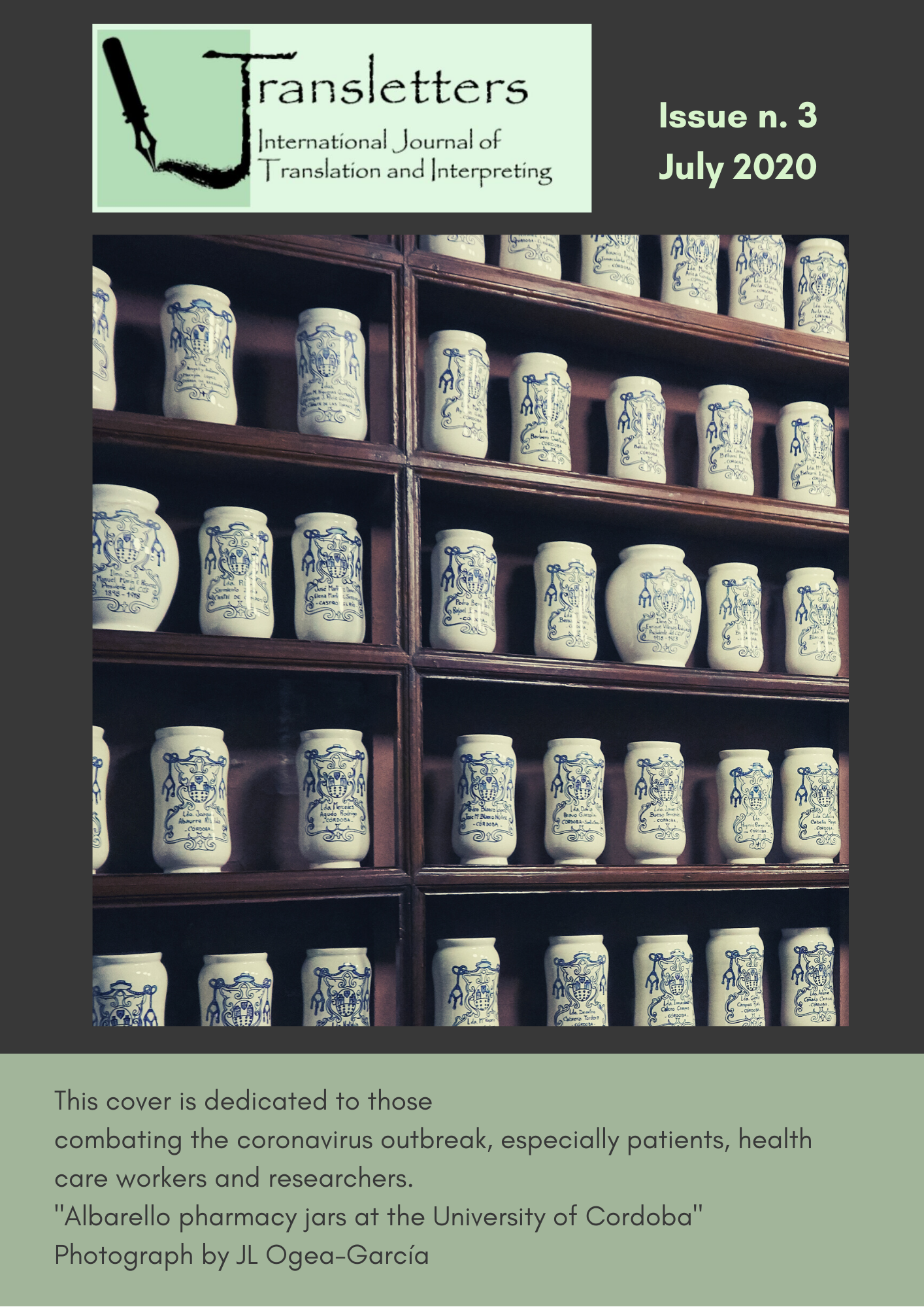Aba-Carina P. (2019) Intersemiotic Translation Literary and Linguistic Multimodality. Cham: Springer Nature Switzerland AG
Contenido principal del artículo
Resumen
This review examines Aba-Carina Pârlog’s volume on the theoretical and practical aspects of intersemiotic translation, with a purposeful focus on multimodality at its core. While somewhat compressed in length, at 80 pages in total, the book draws on the wealth of semiotic and translatological literature and presents its main points effortlessly and with a precision sometimes lacking in drawn-out academic treatises on related topical issues. The author explores and illustrates each of their themes in an approachable and thorough manner, building their arguments on practical examples for each theoretical question.
Descargas
Los datos de descargas todavía no están disponibles.
Detalles del artículo
Cómo citar
Čemerin, V. (2020). Aba-Carina P. (2019) Intersemiotic Translation Literary and Linguistic Multimodality. Cham: Springer Nature Switzerland AG. Transletters. International Journal of Translation and Interpreting, (4), 383–386. Recuperado a partir de https://journals.uco.es/tl/article/view/12697
Número
Sección
Reseñas de libros
Proposed Policy for Journals That Offer Open Access
Authors who publish with this journal agree to the following terms:
- Authors retain copyright and grant the journal right of first publication with the work simultaneously licensed under a Creative Commons Attribution License that allows others to share the work with an acknowledgement of the work's authorship and initial publication in this journal.
- Authors are able to enter into separate, additional contractual arrangements for the non-exclusive distribution of the journal's published version of the work (e.g., post it to an institutional repository or publish it in a book), with an acknowledgement of its initial publication in this journal.
- Authors are permitted and encouraged to post their work online (e.g., in institutional repositories or on their website) prior to and during the submission process, as it can lead to productive exchanges, as well as earlier and greater citation of published work (See The Effect of Open Access).

